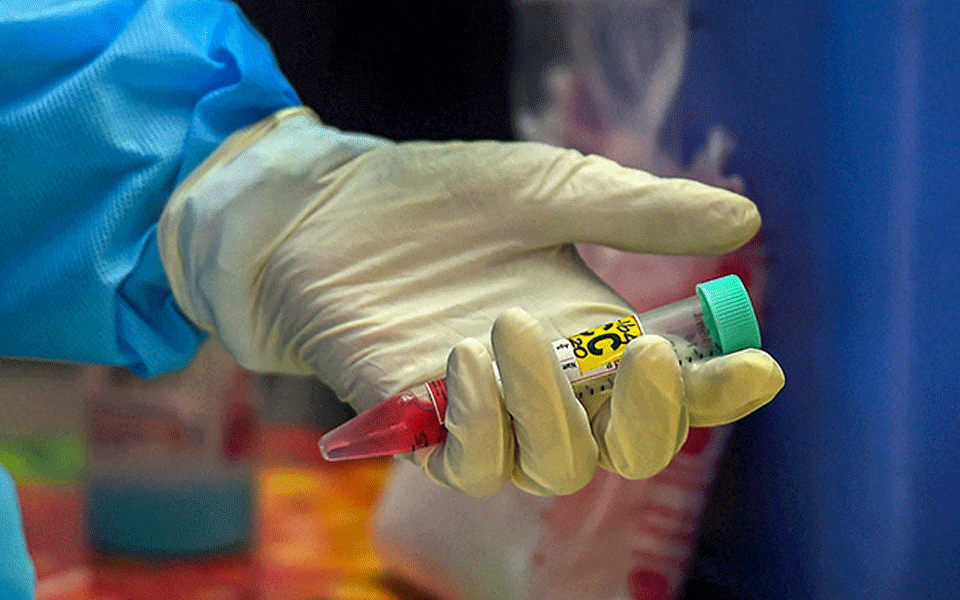Dubai: The small, neighbouring sheikhdoms of Bahrain and Qatar have the world's highest per-capita rates of coronavirus infections.
In the two Mideast countries, COVID-19 epidemics initially swept undetected through camps housing healthy and young foreign labourers, studies now show.
In Qatar, a new study found that nearly 60% of those testing positive showed no symptoms at all, calling into question the usefulness of mass temperature checks meant to stop the infected from mingling with others. In Bahrain, authorities put the asymptomatic figure even higher, at 68%.
These results reflect both the wider problems faced by Gulf Arab countries reliant on cheap foreign labour and their relative success in tracking their COVID-19 epidemics, given their oil wealth and authoritarian governments.
Aggressive testing boosted the number of confirmed cases as health officials in Bahrain and Qatar targeted vulnerable labour camps and neighbourhoods, where migrant workers from Asia sleep, eat and live up to dozen people per room.
This is why globally we failed to control, I think, the infection because simply the response has been focused on trying to find cases and isolate them and quarantine their contacts, said Laith Abu-Raddad, a disease researcher at Weill Cornell Medicine Qatar.
Now, if most people getting the infection are actually spreading the infection without even knowing it, this really does not actually work.
The island kingdom of Bahrain and the energy-rich peninsular nation of Qatar have been locked in a yearslong political dispute that's ended travel and trade between two countries only kilometres (miles) apart.
Yet similarities abound in these US-allied nations Bahrain hosts the US Navy's 5th Fleet while Qatar hosts the forward headquarters of the US military's Central Command at its sprawling Al-Udeid Air Base.
Both rely heavily on foreign labour, whether white-collar workers in banks or blue-collar labourers scaling scaffolding on construction sites. Qatar in particular embarked on a massive construction boom ahead of hosting the 2022 FIFA World Cup.
The virus found a home in the cramped quarters that foreign labourers live in while trying to save money to send back home.
In Qatar, nearly 30% of those found infected were from India, while 18% were Nepalis and 14% were Bangladeshis, according to a study by Abu-Raddad and others.
Of the over 6,000 contact trace cases that Bahrain published, more than 2,600 involved Indian nationals, while 1,310 were Bahrainis and 1,260 were Bangladeshi. More than 400 came from Pakistan, with a similar number from Nepal.
Those figures in Bahrain and Qatar likely track across the wider Gulf Cooperation Council, the regional bloc that also includes Kuwait, Oman, Saudi Arabia and the United Arab Emirates, all of which rely on a vast foreign labour pool already sickened and trapped by the virus.
Though other GCC nations haven't broken down coronavirus cases by nationalities, a recently published article in the Oman Medical Journal said that of the sultanate's first 1,304 cases of the virus, 29% of patients were Indian, 20% were Bangladeshi and 10% were Pakistani.
Their living conditions likely make them more at risk of contracting the virus, as Bahrainis and Qataris usually live in single-family homes. The spread mirrors the contagion seen in boarding schools and other places where people live together in communal spaces.
Qatar, with a population of 2.8 million people, has reported more than 107,000 cases of the coronavirus and 163 deaths. Bahrain, with a population of 1.6 million, has reported more than 37,000 cases and 130 deaths.
Strikingly, the mortality rate in the two countries remains low, with Qatar at 0.15% and Bahrain at 0.34%. The US mortality rate is around 3.6%.
Both Abu-Raddad and Ghina Mumtaz, a disease researcher at the American University of Beirut, attribute that in part to the younger population of the labourers in both Bahrain and Qatar.
If you look at the infection-fatality rate, you will realise that it's not as scary as if you look only at the figure of the number of cases per capita, Mumtaz said.
In response to questions from The Associated Press about their outbreaks, both Bahrain and Qatar attributed their high case numbers to having some of the world's best per capita testing rates.
Qatar also compared itself to Singapore, a southeast Asia city-state that similarly had virus outbreaks among its migrant labourers.
Bahrain said its government's pre-emptive testing strategy means that the vast majority of cases are identified prior to the development of symptoms.
Of the Bahrain contract trace cases, over 2,000 came as part of a campaign to obtain random samples from the community, the database showed. More than 1,300 were foreign workers tested while the area they lived in faced mandatory quarantine orders.
The high number of asymptomatic individuals in both countries means that once the virus reaches a new population, it greatly raises the risk of people unknowingly spreading it while feeling fine.
Let the Truth be known. If you read VB and like VB, please be a VB Supporter and Help us deliver the Truth to one and all.
Visakhapatnam (PTI): India fought back gallantly through Prasidh Krishna and Kuldeep Yadav after Quinton de Kock struck his 23rd hundred, keeping South Africa to a manageable 270 in the third and series-deciding final ODI, here Saturday.
India won the toss after judging the spin of the coin incorrectly 20 times in a row. They had little hesitation in inserting the Proteas into bat, a clear indication of dew factor dominating the thought.
After Arshdeep Singh sent back Ryan Rickelton early, De Kock (106, 89b, 8x4, 6x4) struck his seventh century against India and put on 113 runs off 124 balls with skipper Temba Bavuma (48, 67b) as the visitors moved to a healthy position.
De Kock was severe on Prasidh (4/66), who erred on length continuously in his first spell (2-0-27-0). The left-hander biffed the pacer for 6, 6, 4 in his second over to milk 18 runs.
The 32-year-old quickly pounced on anything that was short, and pacers Prasidh and Harshit offered him plenty of feed on his pet areas.
Bavuma was more sedate, and made runs through those typical dabs and jabs, occasionally unfurling a drive of elan.
De Kock moved to fifty in 42 balls, and never let the tempo down reaching his hundred in 79 balls.
India found temporary relief when Ravindra Jadeja induced a false slash from Bavuma to get caught by Virat Kohli at point.
The tourists got another move on through a 54-run partnership between De Kock and Matthew Breetzkle for the third wicket, and at 168 for two in 28 overs they were in a good position to press on.
But Breetzke's punishment of part-time spinner Tilak Varma forced a rethink in the Indian camp, as skipper KL Rahul brought back Prasidh for a second spell.
What a masterstroke it turned out to be! The Karnataka man broke the back of South Africa’s top and middle order in an exceptional second spell (4-0-11-3).
Breetzke was the first man to go, trapped plumb in front with a straight one and four balls later Aiden Markram uppishly chipped a fuller delivery to Kohli at short covers.
Prasidh soon castled De Kock, whose ugly cross-batted swipe failed to connect a full length delivery from the pacer.
All of a sudden, SA found themselves at a shaky 199 for five, losing three wickets in the space of three overs.
Once Prasidh was done away with the top and middle-order, left-arm wrist spinner Kuldeep (4/41) took over and mopped up the tail as SA fell short of even a par total on this track.





